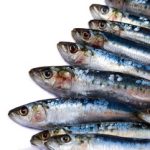Teichoic acids (TA) are anionic polymers found in Gram-positive bacteria cell walls and are made of polyglycerol (polyol) phosphate units of approximately 20 to 30 repeats. They are also described as glycopolymers of ribitol containing phosphodiester-linked polyol repeat units.
They are well characterised and the most abundant of all cell wall components in the Gram-+ve type of bacteria.
They are not found in Gram-negative bacteria.
They are involved, amongst other compounds, in the regulation of cell morphology as well as in cell division. They can represent up to 50% of the dry-weight of the bacterial cell wall.
Teichoic acids are categorized into two groups: wall teichoic acids (WTA) and lipid teichoic acids (LTA), which are covalently bound to the peptidoglycan or anchored into the plasma membrane, respectively. The glycerol-phosphate group can be substituted with d-Ala residues or glycosyl-residues (Glc, Gal, GlcNac) that modify the charge state of the CW.
Although lipoteichoic acid and WTA share common composition, their metabolism pathways are different. Besides, WTA are not found in every LAB species.
The structure of LTA is different for each Gram +ve bacteria. LTA is mainly long chains of ribitol or glycerol phosphate. They are connected or anchored to the cell membrane using diacylglycerol. They are regulators of autolytic wall enzymes or muramidases.
Lipoteichoic acid is not only composed of a poly(glycerophosphate) chain but also glycolipids and is known to interact with Toll-like receptor (TLR) 2. In some instances it is a virulence factor associated with Enterococcus faecalis that is linked to inflammatory damage.
Both LTA and WTA are involved in numerous phenomena, such as the control of cell division and the cell morphology, and contribute to cellular adhesion (Dos Santos Morais et al., 2022).
There are 10 genes encoding enzymes involved in teichoic acid biosynthesis.
Lactobacillus LTA is involved in anti-inflammatory responses (Grangette et al., 2005; Noh et al., 2015) alongside peptidoglycan (PGN). The LTA isolated from a pathogen such as Staphylococcus aureus increases the production of inflammatory cytokines and causes pulmonary inflammation and circulatory failure (De Kimpe et al., 1995).
References
De Kimpe, S.J.; Kengatharan, M.; Thiemermann, C.; Vane, J.R. (1995) The cell wall components peptidoglycan and lipoteichoic acid from
Staphylococcus aureus act in synergy to cause shock and multiple organ failure. Proc. Natl. Acad. Sci. USA 92, pp. 10359–10363
Dos Santos Morais, R., Gaiani, C., Borges, F. Burgain, J. (2022) Interactions Microbe-Matrix in Dairy Products. In: Encyclopedia of Dairy Sciences (3rd edt.) Academic Press pp. 133-143 (Article) .
Grangette, C., Nutten, S., Palumbo, E., Morath, S., Hermann, C., Dewulf, J., et al. (2005). Enhanced antiinflammatory capacity of a Lactobacillus plantarum mutant synthesizing modified teichoic acids. Proc. Natl. Acad. Sci. U.S.A. 102, pp. 10321–10326. doi: 10.1073/pnas.0504084102



I like these short items. I’m writing an introduction for a paper so I’ve borrowed some of this material and will reference properly.